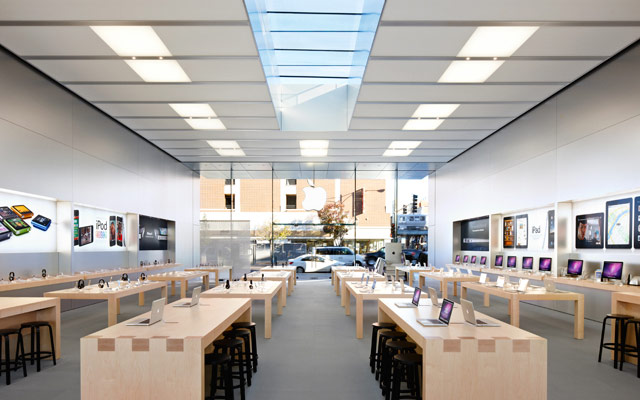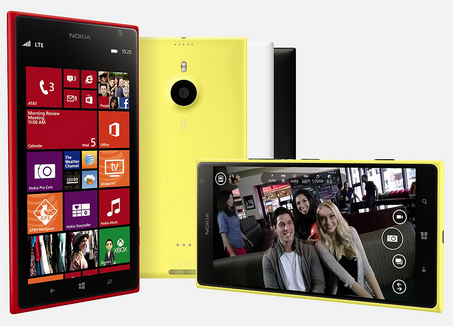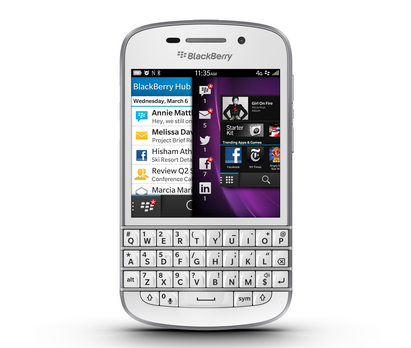Massive innovations in consumer technology don’t happen every year—at least not in a mass market kind of way. In the case of smartphones, they look more or less the same as they did five years ago. Despite how people often think of the industry, it is far more inclined to a slower pace of iteration that produces more annualized products and a slower evolution of trends.
2013 will be remembered for a lot of things—bigger displays became mainstream, voice recognition got really good, Samsung surpassed Apple, and the design of all smartphone software became flattened thanks to iOS 7.
Here are our 5 predictions for what’s in store in 2014:
1. Curved Displays Will Be 2014’s Most Memorable Trend

Flexible displays were a really big deal at CES this year with both LG and Samsung showing massive 4K televisions with a curve in them (and even on that could bend on command). Curved displays on smartphones are slightly less impressive, but with the LG G Flex already hitting markets and the Samsung Round on its way, it’s sure to be one of the most talked about trends of the year. Regardless of whether or not the trend sticks with consumers, 2014 will no doubt be remembered as the year of the flexible displays.
2. The Dream of a True Mobile Point of Sale May Finally Come True

The phrase “mobile point-of-sale” might not mean much to you now—and perhaps it never will. But by the end of 2014, we predict that it might be one of your favorite things that your trusty smartphone can do. Point of sale refers to where the actual sale of a product or service happens—for most, it’s either a cash register or debit card reader. Though some attempts have been made through NFC (near field communication), Apple’s vision of stores without checkout stands is, by far, the more interesting solution. Whether or not Apple will take Passbook or iTunes payment to the next level (or if Google will follow suit) is up in the air, but if every store was like an Apple Store, we’d be happy campers.
3. Displays Will Keep Getting Bigger

Yes—smartphone screens have been getting bigger for the past few years and will continue into 2014. We’ve seen phones as ridiculously big as the 6” Lumia 1520 or the 6.4” Sony Xperia Z1 Ultra, and we’ll probably see even more of those this year. However, the final piece of the big phone puzzle has always been Apple—one of the last manufacturers to insist that smaller a form factor has been the way to go. However, as most analysts and reports have been indicating, 2014 will no doubt the year that Apple gives up the fight and gives in to the complaints of customers.
4. Smaller Phone Manufacturers Will All But Disappear

Blackberry, Motorola, HTC, and Nokia are the old guard of the phone market—the founders of the mobile industry and the innovators that laid the path for companies like Google and Apple. However, as we’ve seen in the past couple of years, brands like iPhone, Galaxy, and Nexus have pushed these old players up against the wall: be purchased or fade away seem to be the only two options at this point. With Blackberry all but gone and Motorola and Nokia being owned by Google and Microsoft, HTC really is the last of the bunch. Unfortunately, considering the company’s disappointing sales figures in 2013, they’ll need to make a big splash if they hope to survive much longer.
5. Unlocked Phones Will Become an Increasingly Popular Alternative

With T-Mobile and Google at the helm, a different way of buying smartphones may finally break into the mainstream a bit in 2014. While T-Mobile has continuously attacked the contracts and subsidies of other phone carriers, Google has launched two fantastic smartphones that each sell for impressively low prices. The Moto X and Nexus 5 may not have sold like the iPhone 5s or the Galaxy S4, but they just may usher in a new pricing model to a consumer base that is tired of lock-in contracts and high service costs.
Luke Larsen is the tech editor at Paste Magazine. Follow him on Twitter at @lalarsen11.